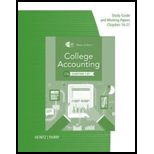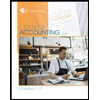
RATIO ANALY SIS OF COMPARATI VE FIN ANCIAL STATE MENT S Refer to the financial statements in Problem 24-8B.
REQUIRED
Calculate the following ratios and amounts for 20-1 and 20-2 (round all calculations to two decimal places).
(a) Return on assets (Total assets on January 1, 20-1, were $111,325.)
(b) Return on common stockholders’ equity (Total common stockholders’ equity on January 1, 20-1, was $82,008.)
(c) Earnings per share of common stock (The average numbers of shares outstanding were 6,300 shares in 20-1 and 6,900 in 20-2.)
(d) Book value per share of common stock
(e) Quick ratio
(f)
(g)
(h) Receivables turnover and average collection period (Net receivables on January 1, 20-1, were $28,995.)
(i) Merchandise inventory turnover and average number of days to sell inventory (Merchandise inventory on January 1, 20-1, was $32,425.)
(j) Debt-to-equity ratio
(k) Asset turnover (Assets on January 1, 20-1, were $111,325.)
(l) Times interest earned ratio
(m) Profit margin ratio
(n) Assets-to-equity ratio
(o) Price-earnings ratio (The market price of the common stock was $120.00 and $110.00 on December 31, 20-2 and 20-1, respectively.)
Calculate the following ratios and amounts for 20-1 and 20-2.
- (a) Return on assets
- (b) Return on common stockholders’ equity
- (c) Earnings per share
- (d) Book value per share
- (e) Quick ratio
- (f) Current ratio
- (g) Working capital
- (h) Receivables turnover and average collection period
- (i) Merchandise inventory and average number of days to sell inventory
- (j) Debt-equity ratio
- (k) Assets turnover
- (l) Times interest earned ratio
- (m) Profit margin ratio
- (n) Assets to equity ratio
- (o) Price-earnings ratio
Explanation of Solution
Financial statement analysis:
Financial statement analysis is a valuable measure for evaluating management performance.
The methods of analysis must be used carefully with in their limitations.
(a)
Calculate return on assets during the period of 20-2.
Calculate return on assets during the period of 20-1.
(b)
Calculate return on common stockholders’ equity during the period of 20-2.
Calculate return on common stockholders’ equity during the period of 20-1.
(c)
Calculate earnings per share of common stock during the period of 20-2.
Calculate earnings per share of common stock during the period of 20-1.
(d)
Calculate book value per share of common stock during the period of 20-2.
Calculate book value per share of common stock during the period of 20-1.
(e)
Calculate quick ratio during the period of 20-2.
Calculate quick ratio during the period of 20-1.
(f)
Calculate current ratio during the period of 20-2.
Calculate current ratio during the period of 20-1.
(g)
Calculate working capital during the period of 20-2.
Calculate working capital during the period of 20-1.
(h)
Calculate receivables turnover during the period of 20-2.
Calculate receivables turnover during the period of 20-1.
Calculate average collection period during the period 20-2.
Calculate average collection period during the period 20-1.
(i)
Calculate merchandise inventory turnover during the period 20-2.
Calculate merchandise inventory turnover during the period 20-1.
Calculate average number of days to sell inventory during the period of 20-2.
Calculate average number of days to sell inventory during the period of 20-1.
(j)
Calculate debt-equity ratio during the period of 20-2.
Calculate debt-equity ratio during the period of 20-1.
Calculate asset turnover ratio during the period of 20-2.
Calculate asset turnover ratio during the period of 20-1.
(l)
Calculate time interest earned ratio during the period of 20-2.
Calculate time interest earned ratio during the period of 20-1.
(m)
Calculate profit margin ratio during the period of 20-2.
Calculate profit margin ratio during the period of 20-1.
(n)
Calculate assets to equity ratio during the period of 20-2.
Calculate assets to equity ratio during the period of 20-1.
(o)
Calculate price earnings ratio during the period of 20-2.
Calculate price earnings ratio during the period of 20-2.
Want to see more full solutions like this?
Chapter 24 Solutions
Study Guide for Working Papers for Heintz/Parry's College Accounting, Chapters 16-27, 23rd
- 1 1. Provide BOTH the Direct and Indirect cash flow from operations 2. 3. 4. 5. 6. 7. There is no Foreign Exchange Effect. You do not need to provide a line item for that. I will NOT provide Balance Sheet information. This means you will NOT be able to prove out the Net Change in Cash nor the Closing Balance for the sum of Cash, Cash Equivalents and Restricted Cash. There is no Restricted Cash. So if you prefer to show the Opening and Closing balances as the sum of Cash and Cash Equivalents and not refer to Restricted Cash that is fine and even preferred. Be sure to provide a section for Disclosures. Those disclosures must refer to the Indirect Method you are asked to prepare in item #1 above. BE SURE TO PUT YOUR NAME ON YOUR EXCEL SPREADSHEET SO I KNOW WHO TO AWARD THE GRADE TO. GOOD LUCK! The company began the year with a credit balance in Trade Accounts Payable to inventory vendors of $ 300,000. During the year, vendors were paid $ 500,000. The vendors delivered $ 800,000 in…arrow_forwardCan you explain this general accounting question using accurate calculation methods?arrow_forwardI need guidance with this general accounting problem using the right accounting principles.arrow_forward
- I am searching for the accurate solution to this general accounting problem with the right approach.arrow_forwardI am trying to find the accurate solution to this general accounting problem with the correct explanation.arrow_forwardPlease help me solve this general accounting problem with the correct financial process.arrow_forward
 College Accounting, Chapters 1-27AccountingISBN:9781337794756Author:HEINTZ, James A.Publisher:Cengage Learning,
College Accounting, Chapters 1-27AccountingISBN:9781337794756Author:HEINTZ, James A.Publisher:Cengage Learning, Managerial AccountingAccountingISBN:9781337912020Author:Carl Warren, Ph.d. Cma William B. TaylerPublisher:South-Western College Pub
Managerial AccountingAccountingISBN:9781337912020Author:Carl Warren, Ph.d. Cma William B. TaylerPublisher:South-Western College Pub College Accounting, Chapters 1-27 (New in Account...AccountingISBN:9781305666160Author:James A. Heintz, Robert W. ParryPublisher:Cengage Learning
College Accounting, Chapters 1-27 (New in Account...AccountingISBN:9781305666160Author:James A. Heintz, Robert W. ParryPublisher:Cengage Learning Financial And Managerial AccountingAccountingISBN:9781337902663Author:WARREN, Carl S.Publisher:Cengage Learning,
Financial And Managerial AccountingAccountingISBN:9781337902663Author:WARREN, Carl S.Publisher:Cengage Learning, Financial AccountingAccountingISBN:9781337272124Author:Carl Warren, James M. Reeve, Jonathan DuchacPublisher:Cengage Learning
Financial AccountingAccountingISBN:9781337272124Author:Carl Warren, James M. Reeve, Jonathan DuchacPublisher:Cengage Learning Managerial Accounting: The Cornerstone of Busines...AccountingISBN:9781337115773Author:Maryanne M. Mowen, Don R. Hansen, Dan L. HeitgerPublisher:Cengage Learning
Managerial Accounting: The Cornerstone of Busines...AccountingISBN:9781337115773Author:Maryanne M. Mowen, Don R. Hansen, Dan L. HeitgerPublisher:Cengage Learning





